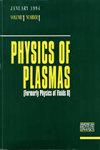The effect of energetic electrons in lunar ionosphere on the streaming plasma instability around moon
IF 2.2
3区 物理与天体物理
Q3 PHYSICS, FLUIDS & PLASMAS
引用次数: 0
Abstract
The analytical study of the two-stream instability (TSI) generation is carried out in the lunar ionosphere. The solar wind is considered an electron beam, which interacts with the lunar ionosphere, generated due to the photoionization of the lunar neutrals by the extreme ultraviolet component of the solar radiation. In this interaction process, the lunar electrons constitute the background plasma as the ion population is considerably low in the lunar plasma environment. In the present study along with the non-energetic (“cold”) electrons, which are in the majority, a fraction of energetic electrons (“hot”) of the total lunar electron population are also considered and the fraction of energetic electrons is taken in the range of 1%–25% of the total lunar electron count. The particle-in-cell simulations suggest that the presence of energetic electrons in the lunar plasma environment hastens the electron bunching during the interaction with the incoming solar wind electrons during the TSI. The energetic electrons in the lunar plasma environment are capable of triggering non-linear phenomena, such as the generation of lunar plasma waves. The inclusion of hot electrons in the lunar plasma ambiance changes the scenario for the TSI to occur in the lunar ionosphere, and the analysis shows that it modifies the TSI dispersion relation and can have a significant impact on the growth and decay of the TSI and its threshold for generation in a lunar plasma environment.月球电离层中的高能电子对月球周围流等离子体不稳定性的影响
在月球电离层对双流不稳定性(TSI)的产生进行了分析研究。太阳风被认为是一种电子束,它与月球电离层相互作用,是由于月球中性物质在太阳辐射的极紫外分量作用下发生光离子化而产生的。在这一相互作用过程中,月球电子构成了背景等离子体,因为月球等离子体环境中的离子群相当低。在本研究中,除了占大多数的非能量电子("冷 "电子)外,还考虑了月球电子总数中的一部分高能电子("热 "电子),高能电子占月球电子总数的 1%-25%。粒子入室模拟表明,月球等离子体环境中高能电子的存在加速了在TSI期间与进入的太阳风电子相互作用时的电子束化。月球等离子体环境中的高能电子能够引发非线性现象,如产生月球等离子体波。月球等离子体环境中热电子的加入改变了月球电离层中发生 TSI 的情景,分析表明它改变了 TSI 的弥散关系,并可能对 TSI 的增长和衰减及其在月球等离子体环境中产生的阈值产生重大影响。
本文章由计算机程序翻译,如有差异,请以英文原文为准。
求助全文
约1分钟内获得全文
求助全文
来源期刊

Physics of Plasmas
物理-物理:流体与等离子体
CiteScore
4.10
自引率
22.70%
发文量
653
审稿时长
2.5 months
期刊介绍:
Physics of Plasmas (PoP), published by AIP Publishing in cooperation with the APS Division of Plasma Physics, is committed to the publication of original research in all areas of experimental and theoretical plasma physics. PoP publishes comprehensive and in-depth review manuscripts covering important areas of study and Special Topics highlighting new and cutting-edge developments in plasma physics. Every year a special issue publishes the invited and review papers from the most recent meeting of the APS Division of Plasma Physics. PoP covers a broad range of important research in this dynamic field, including:
-Basic plasma phenomena, waves, instabilities
-Nonlinear phenomena, turbulence, transport
-Magnetically confined plasmas, heating, confinement
-Inertially confined plasmas, high-energy density plasma science, warm dense matter
-Ionospheric, solar-system, and astrophysical plasmas
-Lasers, particle beams, accelerators, radiation generation
-Radiation emission, absorption, and transport
-Low-temperature plasmas, plasma applications, plasma sources, sheaths
-Dusty plasmas
 求助内容:
求助内容: 应助结果提醒方式:
应助结果提醒方式:


